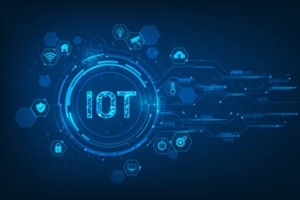 Internet of things (IoT) devices are no longer a future development in trending industries. Instead, they are present-day priorities for developing more intelligent infrastructure in data-driven businesses. Smart hospitals, manufacturers, and more use IoT solutions development to stay ahead of their competition.
Internet of things (IoT) devices are no longer a future development in trending industries. Instead, they are present-day priorities for developing more intelligent infrastructure in data-driven businesses. Smart hospitals, manufacturers, and more use IoT solutions development to stay ahead of their competition.
Using the latest edge processing, security protocols, cloud technologies, and AI-driven analytics, project managers, developers, and solution architects work to align their organization’s technology workflow with its long-term goals.
This article reviews the architectural and operational strategies that professionals should consider to meet IoT solution development standards in their industry.
Current Trends in IoT Development
Modern IoT solutions development depends on a business’s ability to maintain modern technology standards, including real-time data collection, security protocols, and scalability. By focusing on these factors, businesses can adopt the latest innovations in IoT development, including:
Edge Computing Integration
Edge computing allows organizations to process data on local devices and gateways rather than outsourcing it to a cloud server. This allows internal servers to reduce bandwidth loads, latency, and response times for critical applications, which is essential in manufacturing and healthcare IoT.
AI and Machine Learning Applications
Artificial intelligence (AI) and machine learning (ML) enhance IoT systems. They enable managers to incorporate predictive maintenance, pattern detection, and actionable insights into their workflows.
Cloud-Native Architectures
Cloud-native development saves companies money and administrative time on hardware, allowing for rapid scaling, high network availability, and streamlined deployment without on-site servers.
Choosing the Right Development Framework
The right framework of software tools is essential to IoT solutions development in a modern organization. Business leaders should consider these criteria when deploying IoT device workflows:
Platform Selection Criteria
To choose the right IoT solutions for their organizations, managers and designers should consider these four factors:
- Device compatibility
- Built-in integration
- Security features
- Community support
Successful IoT solutions deployment relies on maintaining compatibility with the current framework while future-proofing devices for new systems. This requires maintaining security features on well-supported platforms with continuous maintenance and development from the vendor.
Technology Stack Considerations
 The organization’s current technology stack should also be considered when deploying new IoT devices. A typical IoT system stack includes edge processors, middleware, sensors, cloud APIs, dashboards, and more. Successfully choosing and maintaining a new IoT technology stack should factor in hardware constraints, connectivity needs, and frameworks before deployment.
The organization’s current technology stack should also be considered when deploying new IoT devices. A typical IoT system stack includes edge processors, middleware, sensors, cloud APIs, dashboards, and more. Successfully choosing and maintaining a new IoT technology stack should factor in hardware constraints, connectivity needs, and frameworks before deployment.
Scalability Requirements
In addition to deployment, organizations must account for scalability in their IoT solutions. The number of supported devices can grow rapidly, with multiple managed databases and event-driven architectures coming into play. IoT environments must offer elastic scaling protocols that can expand the network without expensive hardware reengineering.
Building Secure IoT Solutions
Security is an essential priority when deploying or scaling IoT solutions. Each connected device can provide an entry point for hackers to exploit. A proactive IoT security setup should include three features:
- Security by Design, which adopts a mindset that the organization’s distinct development cycle should dictate the security plan. Organizations can conduct threat modeling to find gaps in their user training and interfacing practices to prevent vulnerabilities before they become costly.
- Authentication Methods, which should include strong and scalable mechanisms, such as device-to-cloud authentication protocols. Modern IoT networks should allow admins to approve, rotate, or revoke access credentials remotely in response to new duties or behavior anomalies.
- Data Protection Strategies, which include TLS encryption and separate protocols for data storage. Data minimization is important in many industries, including healthcare, since it encourages businesses to only collect the information they need and encrypt the information they do collect and store.
Implementing Agile IoT Development
IoT solutions development must move quickly to keep up with competition, changing regulations, and shifting security standards. Agile IoT development adapts to user feedback and operational changes to deliver higher ROI to the organization using three principles:
- Sprint Planning, which targets certain tasks, such as device onboarding or calibration, and quickly cycles through hardware, firmware, and UI integration tasks
- Testing Methodologies, which warrants a layered approach that includes unit tests for backend logic, protocol validation, security testing, and more
- Continuous Integration, involving version-controlled environments and automated builds that can test and deploy updates with minimal disruption
Performance Optimization Strategies
Efficiency is essential in IoT solutions deployment, especially in a constrained operational environment. These principles can help organizations streamline and improve their deployment process:
- Resource Management, including optimizing firmware and memory usage
- Network Efficiency, including efficient communication protocols, data formats, and processes such as batching
- Battery Life Optimization, including profiling energy usage and changing the strategy based on the operational context
Revolutionize IoT Solutions Development With Allpoint Wireless
 IoT device management has revolutionized healthcare, manufacturing, and other data-driven industries. These solutions help project managers, developers, and system architects plan a development-focused mindset with the right agility, security, and intelligence needed to compete in modern data-driven spaces.
IoT device management has revolutionized healthcare, manufacturing, and other data-driven industries. These solutions help project managers, developers, and system architects plan a development-focused mindset with the right agility, security, and intelligence needed to compete in modern data-driven spaces.
Allpoint Wireless helps organization leaders choose the right tools for their data frameworks and embrace modern principles of security and optimization. With the right strategic care, IoT systems can be future-proofed to optimize supply chains and increase the intelligence of connected smart environments.
Contact our team today to access our demo and learn how wireless IoT device installations can optimize your organization.